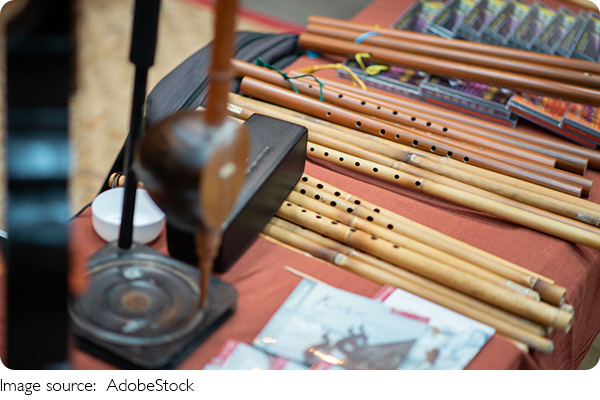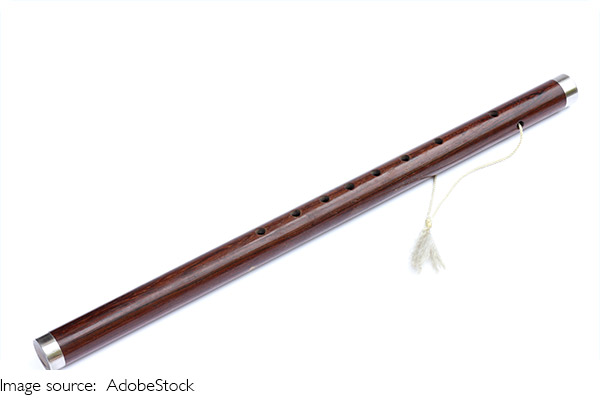Melodic Gourd

Lykkers, have you ever heard of a musical instrument made from a gourd? It might sound unusual, but the gourd flute, also known as the hulusi, produces a sound so smooth and melodious that it captivates everyone who listens.
Originating from the ethnic groups in Yunnan, China, this beautiful instrument carries a rich cultural history and a distinct charm. Let’s explore what makes the gourd flute so special!
The Unique Structure of the Gourd Flute
At first glance, the gourd flute looks different from traditional wind instruments. Its main body is made from a dried gourd, with three bamboo pipes inserted into it. The longest pipe, called the main pipe, has seven finger holes—six on the front and one on the back—allowing for a range of musical notes. The other two pipes, known as drone pipes, create a harmonious background sound, adding depth to the melody. Some versions of the flute allow players to block one or both drone pipes, giving them more control over the music’s texture.
How Different Ethnic Groups Play the Gourd Flute
Several ethnic groups in China Yunnan have their own versions of the gourd flute, each with distinct designs and playing styles.
The Dai-style gourd flute is one of the most well-known types. The instrument is made from a natural gourd and three bamboo pipes. When played, the main pipe produces the melody while the drone pipes sustain a continuous tone, creating a warm and layered sound.
The Achang-style gourd flute is similar in structure but features additional bamboo strips tied to the pipes for reinforcement. This version has a slightly different tone quality, often used in festive performances.
The Wa-style gourd flute has a unique design where the top blowing tube is only about two centimeters long. The main pipe has extra holes at the bottom, allowing for more flexibility in sound production. This version creates a deep, resonant tone, often used in traditional ceremonies and storytelling.

Why the Gourd Flute Sounds So Enchanting
What makes the gourd flute so mesmerizing? The secret lies in its reed. Inside each pipe, a small metal reed vibrates when air is blown through it, producing a rich and expressive sound. Unlike many wind instruments, the gourd flute’s sound is smooth, flowing like water, making it perfect for conveying emotions. Whether it’s a joyful festival tune or a soft, melancholic melody, the gourd flute has the power to touch hearts.
The Cultural Significance of the Gourd Flute
Beyond its musical charm, the gourd flute holds deep cultural significance. In Yunnan’s ethnic communities, it is not just an instrument but also a symbol of love and communication. Traditionally, young men would play the flute to express affection for their loved ones, using music to convey emotions that words could not. Even today, it remains an essential part of celebrations, storytelling, and traditional dances.
Why You Should Try Playing the Gourd Flute
If you love music, why not give the gourd flute a try? Unlike many wind instruments, it is relatively easy to learn. The finger positions are simple, and the breathing technique is gentle, making it a great instrument for beginners. Plus, its compact size makes it easy to carry around, allowing you to play music wherever you go!
Final Thoughts: Let’s Keep the Melody Alive
Lykkers, the gourd flute is more than just a musical instrument—it is a bridge connecting us to culture, tradition, and emotion. Whether you are listening to its soulful melodies or trying to play it yourself, the charm of this instrument is undeniable. Have you ever heard or played the gourd flute? Let’s keep the conversation going and share our musical experiences!
Hulusi - chinese cucurbit flute
video by Veronika Vitazkova

 · Photography Team
· Photography Team